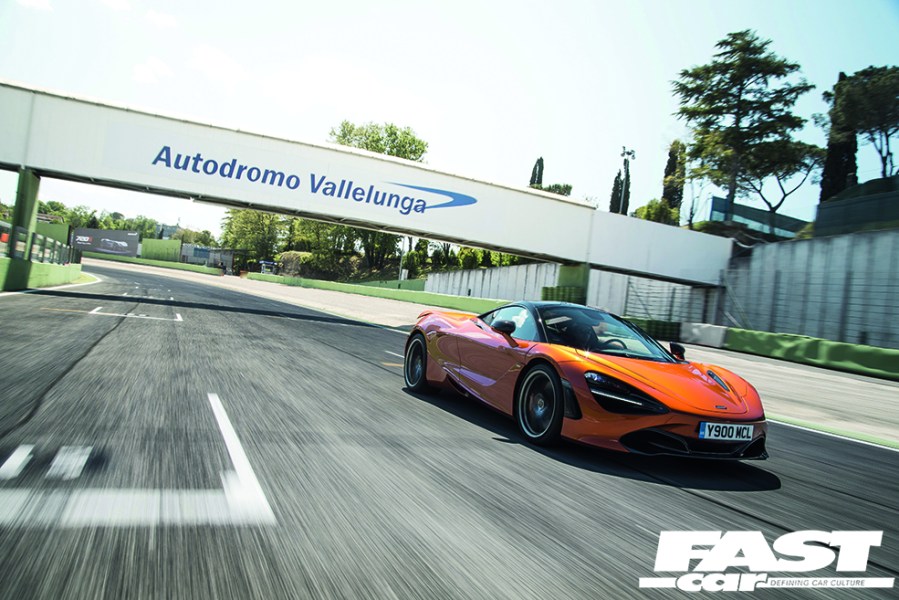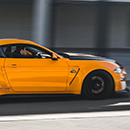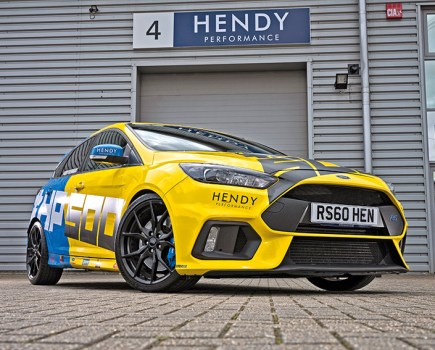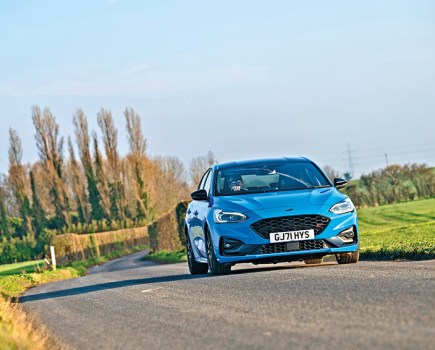The McLaren 720S is more than just an upgrade on the 650S, it pushes the Woking supercar manufacturer into brand new territory with a monstrously fast machine that is strikingly user-friendly. That’s certainly one way to increase sales, but is it actually enjoyable to drive for the enthusiast?
Standing here on the pit wall at Vallelunga circuit, having battled with rush-hour traffic that is unique to Rome, all scooters and battle-scarred Fiats, realisation begins to set in. There’s a deep need to unwind before I join a different type of melee on the circuit in a brand new McLaren. And what happens then is close to bewildering.
Many of you will have been to track days and, pretty early on, there’s a moment when reality kicks in. The wonderful, exhilarating, very fast car you drove that very morning on public roads suddenly doesn’t feel quite as special on the race circuit. For me, it was when my Porsche 911 (964) struggled to reach 130mph on Silverstone’s Hangar Straight, when I thought I’d be getting close to its 160mph maximum.
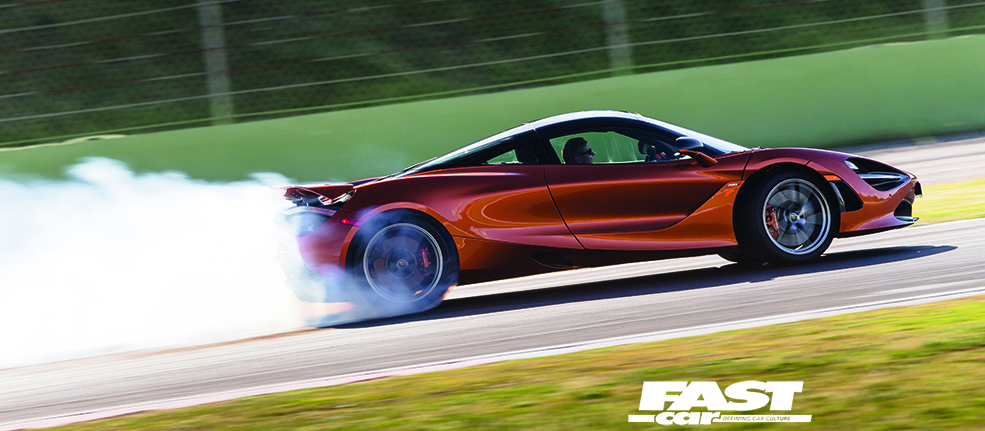
Watching from the pit wall sidelines can be disappointing, too. Many supercars look – dare I say it – somewhat underwhelming as they drive past, driver undoubtedly with foot hard to the boards. It’s all rather sobering.
And so, to the 212mph McLaren 720S. Frankly, it doesn’t have any of these issues. Not even remotely. It blasts past in a sonorous wall of sound, looking like the closest thing to a Le Mans car you’ll find on the road. It seems so very, very fast, exiting Roma corner before the start-finish straight at speeds that set it up for the achingly-quick Curve Grand, just a kink at 100mph – but not with another 50mph dialled in. It’s my turn next.
Let’s backtrack. The 720S is the core of the McLaren Super Series range, which falls between the Sports and Ultimate Series cars (think 540/570 below and Senna/P1 above). It supersedes the 650S, which owed its lineage to the McLaren MP4-12C, the first of the modern-day ‘Woking’ cars.
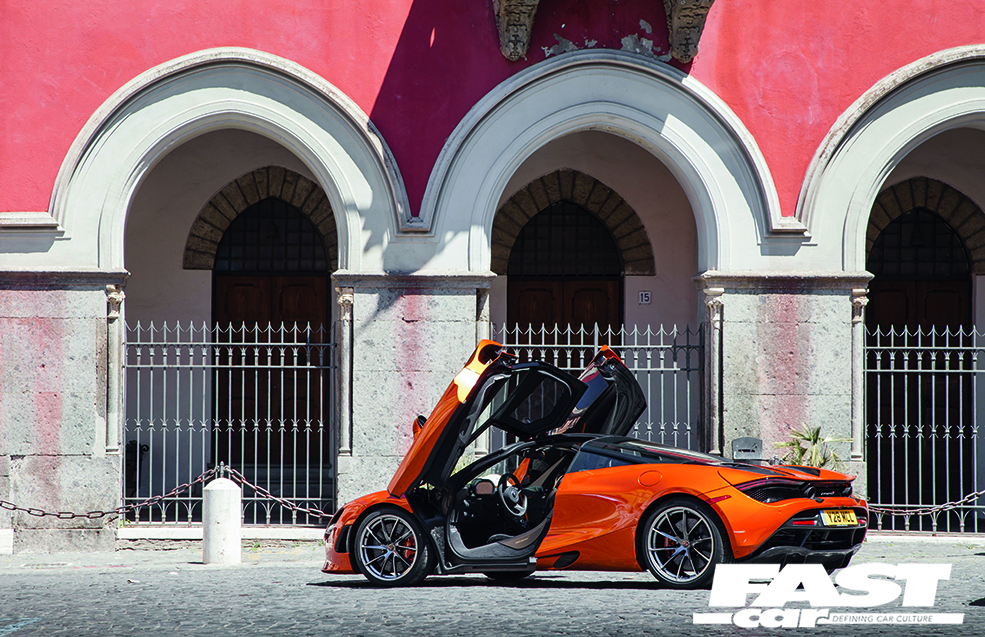
The 720S is very much an all-new design. There’s a fresh styling language, with the air scoops of the 650S now hidden by clever styling that obscures them within the doors. The carbon-fibre monocoque, snappily titled Monocage II, extends right over the roof, so now it’s more of a full eggshell than half an Easter egg. The engine has swelled to 4.0-litres from 3.8-litres, too, pushing power to the 720hp of the car’s name.
Second generation
That’s the bare bones of it, but there’s so much more. You’d expect that. Just as Nissan ironed out all the minor issues with its original electric car in the new 2018 Leaf, so McLaren has had time to make its second-gen model simply, well, just better all round.
The increased chassis stiffness and strength of the Monocage allows new dihedral doors that not only look sensational, but open in less space than those of the 650S and provide easier access to the seats.
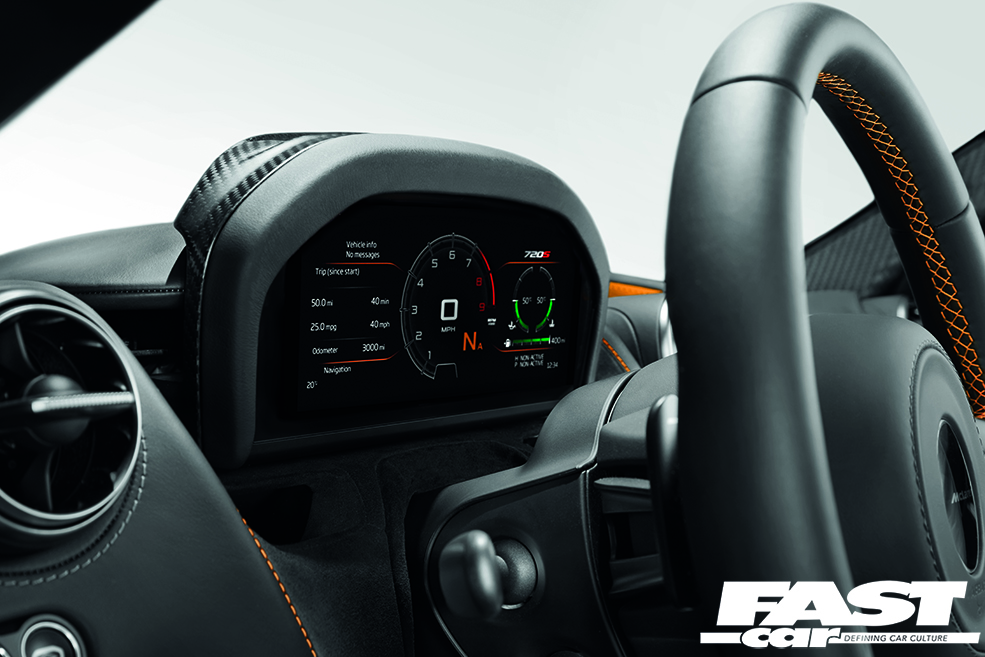
You can specify windows in the roof and, with very thin carbon fibre pillars and a glazed area by the C-pillar, all-round visibility is unprecedented in a supercar.
That’s great for dodging two-wheeled nutcases in Rome, although to counter that you feel pretty exposed down at the level of a moped tailpipe. On balance, however, the ability to accurately place the McLaren in traffic is welcome.
At this sort of money, you really need a cool piece of tech in a supercar, something that makes the passenger gasp at its audaciousness. In the 720S it is the Folding Driver Display. This deploys as you open the door, then initiates a merry light show. When you are in maximum-attack mode, on the road or more likely the track, the display will slide down to its slim incarnation, giving you extra visibility to ensure you can hit those apexes with millimetre-perfect precision.
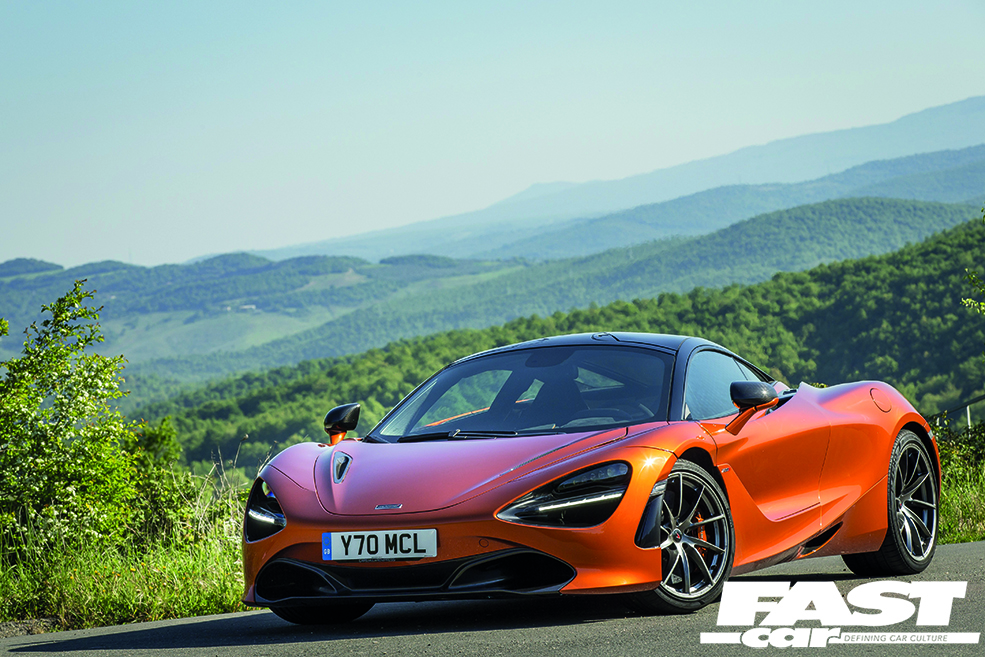
The McLaren’s interior isn’t just attention-grabbing either. The levels of luxury and quality have taken a real step up. Seats are leather or Alcantara, while knobs and switches are bespoke aluminium. It seems light years away from the early 12C.
Weight is a recurring theme, and if you choose to ramp up the luxury, you’ll pay a price – both financially and with a (tiny) loss in performance. So, while McLaren offers a terrific 12-speaker audio system, there’s also a pared-down four-speaker system that, it says, offers a perfect blend between weight and performance.
Time to drive
On to the drive – and there’s so much to delight here. Climbing in through those doors, dropping down into the deeply supportive sports seats, the tricks played by the instrument display. Start the McLaren’s V8 and, for some real juvenile pleasure, you set it for a Hot Start to get some extra fruit from the exhaust.
Select first with the paddle shift, edge out into the traffic and hey, it’s all so straightforward. It’s easiest to use the automatic transmission function initially to concentrate on the McLaren’s size and how close those expensive wheels are to the kerbs.
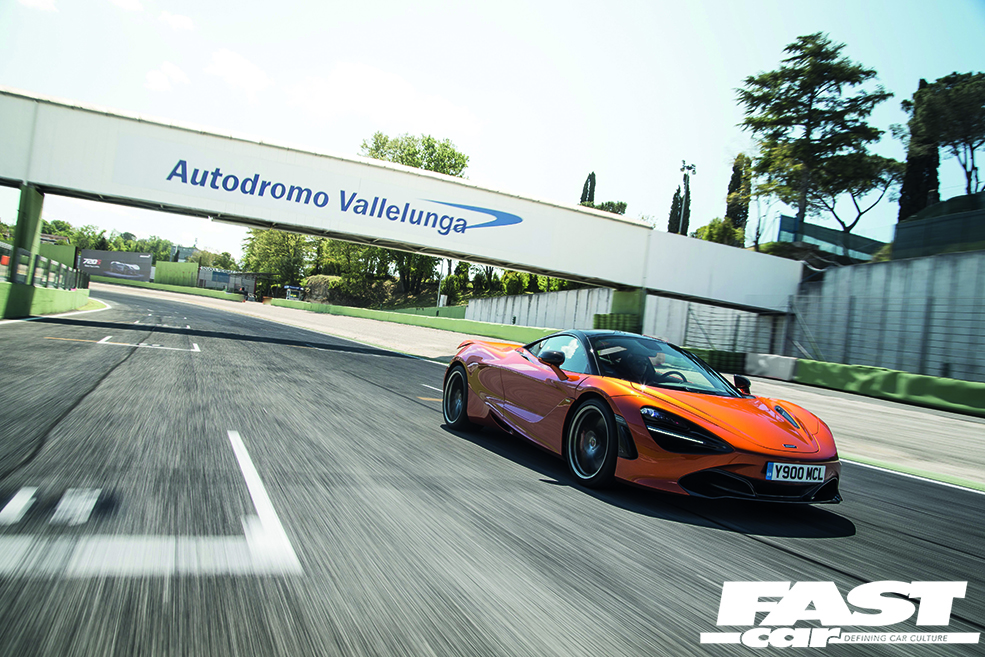
You will, of course, have chosen the sports exhaust option because, even though it means uncomfortably close to £5000 more on the price, it adds several extra layers to the experience. You might think it cheating, but the enhanced sound is at least partly due to the vents on the rear bulkhead that bleed extra sound into the cabin. And trust me, this is definitely what you’ll want if you’ve leapfrogged from an early 12C and its monotone soundtrack. With this level of performance, there’s a need for every nerve to be on end.
That’s because the acceleration of this McLaren is eye-popping. Launch control is probably essential to get down to 2.8 seconds to 60mph (a tenth longer to 62mph, or 100kph), but even doing it all on your Jack Jones, this 720S is so fast out of the blocks that you won’t miss the few tenths salvaged by clever electronics. Actually, it’s rather more fun proving that you can handle this sort of power yourself.
Whatever method you choose, the UK legal limit of 70mph arrives in rather less than four seconds. Hmm. What next? A race track, obviously, and you’ll be very well served, because the men and women of Woking have thought this aspect through most thoroughly.
Take to the track
On the early laps there is much to be discovered in terms of the prodigious grip, fiendishly accurate steering and, again, great visibility that is so helpful when placing the McLaren exactly in the right place on bends. The six-pot carbon ceramic discs are as progressive and powerful as you’d expect, aided by the deployment of the full-width rear wing in maximum drag configuration, which slows the car as well as aiding stability.
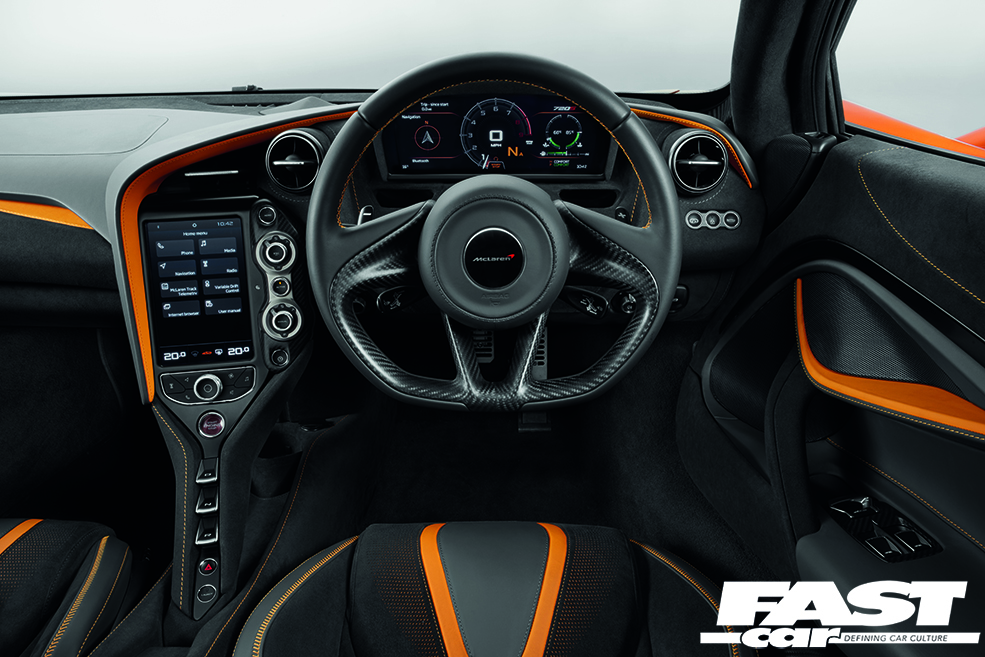
The brakes’ secondary function is to increase agility, by slowing the inside rear wheel to reduce understeer or transfer power to the outside rear to give more traction on the exit to a corner. Such technology was once the preserve of F1 cars, although like much in the car industry, it’s dribbled its way down in a less sophisticated form to more humble sports and saloon cars. The clever thing with the McLaren is that the limited-slip differential you might have expected to find can be dispensed with.
Then there’s the technical highlight: McLaren Variable Drift Control. It makes its debut on the 720S and enhances the track experience by allowing the driver to pre-select just how much oversteer is on the cards before the braking system plays its clever game and oh-so-subtly keeps your expensive car in shape.
There’s a fingertip slider on the screen display that allows the drift angle to be set – with seven stages on offer – and your choice can even be saved for later use once you’ve optimised it to your own preferences.
On-track, MVDC is a supremely effective tool. For those who lack the confidence to go for the traditional supercar ‘everything off’ traction control setting, the 720S offers a way to steadily advance though more benign settings as you become more familiar with the driving experience – and your own abilities.
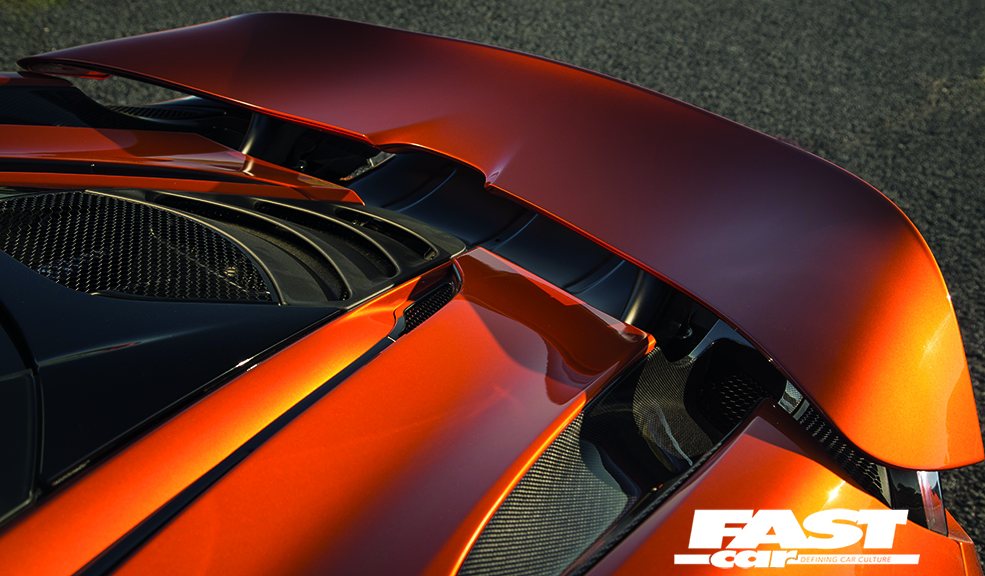
I should add a caveat here. We are not talking about sliding a Mazda MX-5 or Toyota GT86 – nor even something like a Porsche Cayman. The rear of the McLaren 720S is already well tamed by its specially designed 305/30 ZR20 Pirellis. So, to get those tyres to even think about unsticking on a track (and it has to be only on a track, remember that) lateral forces need to be substantial. That means either massive cornering speed, or a massive application of power – possibly both.
The dilemma is that all this can be somewhat scary. Vallelunga is not a very forgiving circuit, and in the half-dozen laps I managed alongside one of McLaren’s track team instructors, I never got close to pulling off a satisfactory drift. Still, like the Land Rover owners who never go off-road but love the fact they could wade through rivers, I like the fact the 720S has Variable Drift Control.
On a more prosaic level, there’s room for a few soft bags behind the seats and under the front panel, the combined fuel economy is 26.4mpg and CO2 emissions are 249g/km. There are 20 paint shades in the main range, seven of them specially developed for the 720S, although you can also go bespoke.
Whatever colour you choose, you won’t have to make any apologies for the 720S when comparing it with rivals. Sub-£300,000, this is arguably the stand out supercar of 2018. As much as we may all love the naturally-aspirated howl and throttle response of a Lamborghini Aventador, McLaren’s prowess at turbocharging brings it right to the forefront.
No, the real debate is whether a supercar should be this benign to drive. Ferrari is heading that way, but Lamborghini is still a true Italian challenge. This sounds like cause for a long, well lubricated, debate…
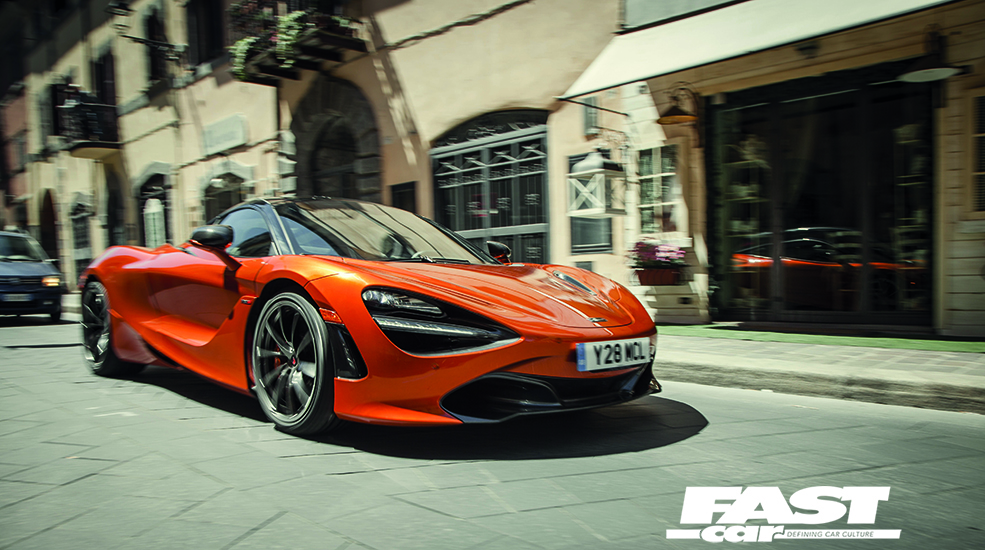
Tech Spec: McLaren 720S
Engine: Twin-turbo V8, mid-mounted, 3994cc
Transmission: Seven-speed dual-clutch semi-auto, rear-wheel drive
Chassis: Carbon fibre monocoque
Suspension: Double wishbones, active dampers
Wheels: 19/20in forged alloys
Tyres: 245/35 R19 (f), 305/30 R20 (r)
Brakes: Carbon ceramic discs, 390mm (f), 380mm (r)
Power: 720hp@7500rpm
Torque: 568lb ft@5500rpm
0-62mph: 2.9 seconds
Top speed: 212mph
Feature taken from Ultimate Supercar. Words: Peter Burgess. Photos: McLaren

